The Full Reviews of SV405CC Astro Camera
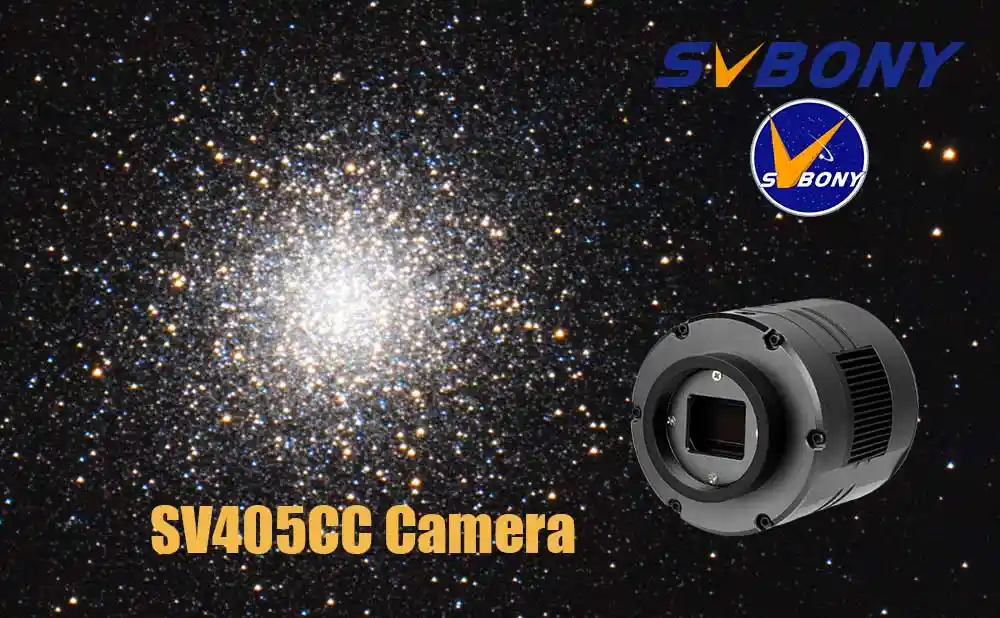
The Full Reviews of SV405CC Astro Camera
Original article from https://dorfkuppel.de/2023/10/08/chinakopie-eines-chinaklassikers-die-svbony-sv405cc-astrokamera/?fbclid=IwZXh0bgNhZW0CMTEAAR2BigrjRfix-8YnP6SLBtoMQYF45IV2jLbHdz7hpKcth8pmt-YV8SSNm_Q_aem_ZmFrZWR1bW15MTZieXRlcw, thanks again to Dimi Georgomanos for sharing, the following is the original blog article:
The desire to buy a real astrophotography camera had been lingering in my mind for a long time. There are certainly many reasons for this, but my main reason was the ability to capture multiple short-exposure images to compensate for the limitations of my imprecise azimuthal LX200R mount.
Of course, price played a key role in my decision. Cameras priced at €1500 or more were simply unaffordable for me at the moment. As is often the case with higher amounts of money, celebrating a birthday became a great advantage. I managed to accumulate several vouchers, and at the same time, there was an €800 offer (on Amazon*) for an astrophotography camera that would otherwise cost €1000.
Unfortunately, it had to be from the manufacturer whose quality perception varies greatly in the public eye. You can find everything from "Chinese junk" to "perfect clone." I didn't have much time to think about it since the €200 offer was only available for a limited time. So, within my means, I set out to make a small comparison between the two similar cameras.
Small Comparison SV405CC - ASI294MC-Pro
There are almost no differences in the technical specifications or the external appearance of the SVBONY SV405CC and the ZWO ASI294 MC-PRO, except for the color and the absence of a USB 2.0 hub.
| SV405CC | ASI294 MC Pro | |
| sensor | SONY IMX294 CMOS | SONY IMX294 CMOS |
| resolution | 4144*2822 | 4144*2822 |
| Pixel size | 4.63μm | 4.63μm |
| Sensor size | 19.2mm*13mm | 19.2mm*13mm |
| Max. frame rate | 19FPS | 19FPS |
| Exposure range | 0.05ms – 2000s | 0.032ms – 2000s |
| USB Type | USB3.0 | USB3.0/USB2.0 |
| Cache | DDR3 256M | DDR3 256M |
| Readout noise | 1.2e | 1.2e |
| Quantum efficiency | 75% | 75% |
| Full Well Capacity | 63k | 63.7k |
| Flange distance | 6.5mm | 6.5mm |
Although there are differences in the shortest possible exposure time and the full well capacity (light sensitivity), these values are very close to each other. It's surprising to see the difference considering that both cameras use the same Sony sensorThe (online) user manuals for both cameras are almost identical. From the diagrams to the readout noise and quantum efficiency, as well as "care and maintenance," the SVBONY manual reads and looks like a copy of the famous red competitor.
Regarding temperature hysteresis, which refers to the temperature difference that the camera can achieve between the sensor and the ambient temperature, I could only find official figures (-35°C) for the ZWO ASI. However, the Amazon page for the SVBONY mentions a similar value of -30°C.
Regarding the USB hub or rather the lack thereof in the SVBONY! Fortunately, I'm one of those who have a USB 3.0 hub installed directly on the telescope, so I don't really miss the USB 2.0 hub that comes with the ZWO ASI.
Thoughts before purchasing
Before buying a product, it's natural to look for practical experiences, but there is almost nothing available about the SVBONY SV405CC in German-speaking regions. However, when it comes to the IMX294 CMOS camera sensor from SONY, you inevitably come across the quite pronounced amp glow.
This amp glow manifests as a bright spot at the edge of the image during longer exposures. It also exists in the SVBONY camera and can be quite pronounced. The only way to reduce it significantly is by taking dark frames.
Of course, with a price €400 lower than its competitor, and even €600 less during the offer, one should expect some drawbacks. One of these drawbacks concerns customer service. However, I was able to gain some confidence in the seller (Amazon) since they satisfactorily answered all my questions within a day through the "Amazon chat service" in German.
Ultimately, I had already decided on the astrophotography camera because the combination of the relatively large sensor (3/4 APS-C size) and the attractive price ultimately tipped the scales. The service provided additional reassurance.
Scope of Delivery
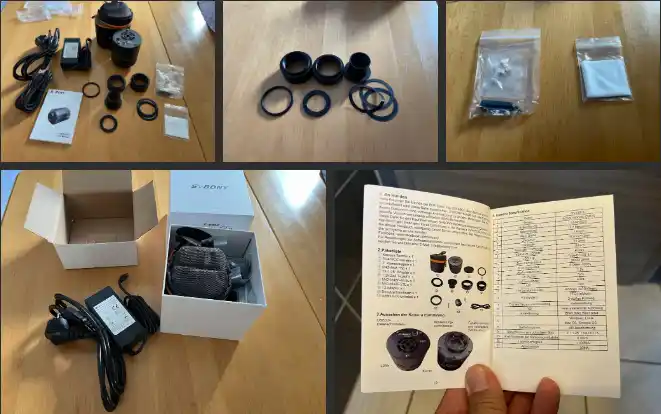
The SV405CC was delivered neatly packed in two cardboard boxes. The smaller box contained the power supply, and the larger one contained the camera and accessories.
Strangely, all suppliers are somewhat reserved about the package contents. However, for me, the package included more than I expected and was described.
The following items were found in the box:
SV405CC camera
Camera bag
12V 5A power supply
User manual (including German)
USB 3.0 cable
T2 to 1.25" adapter
T2 internal extension (connection to the camera)
M42 to M48 adapter
M42 extension 21mm
M42 to M48 extension 16.5mm
2-inch capture ring
Various spacers
Desiccant cartridge
Dust cloth
What's missing
Not included in the package is a UV/IR cut filter (https://www.svbony.com/sv405cc-cooled-color-osc-camera/#F9198F-F9127A). This filter is almost essential. The reason lies in the different focal points between infrared and visible RGB light, which can cause blurriness in the overall image. You can do without the filter if there are no lenses between the sensor and the object or if you use one of the many narrowband filters.
Overall, the package contains everything needed to get started in astrophotography.
The Initial Impression
The initial tactile impression of the SVBONY SV405CC camera is excellent. While there is limited information available about the internal hardware such as fans, Peltier elements, protective glass, etc., the camera itself feels high-quality in its metallic body. The dark gray titanium-like color is also visually appealing.
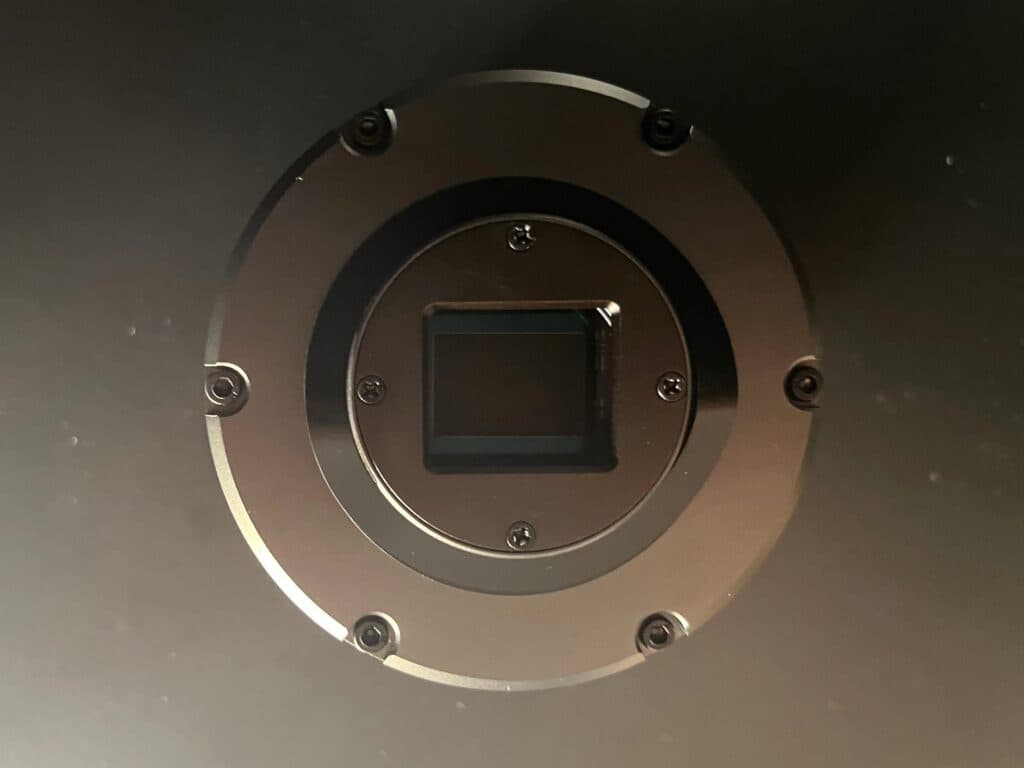
The size of the camera is surprisingly compact, which is a definite improvement over bulky DSLRs.
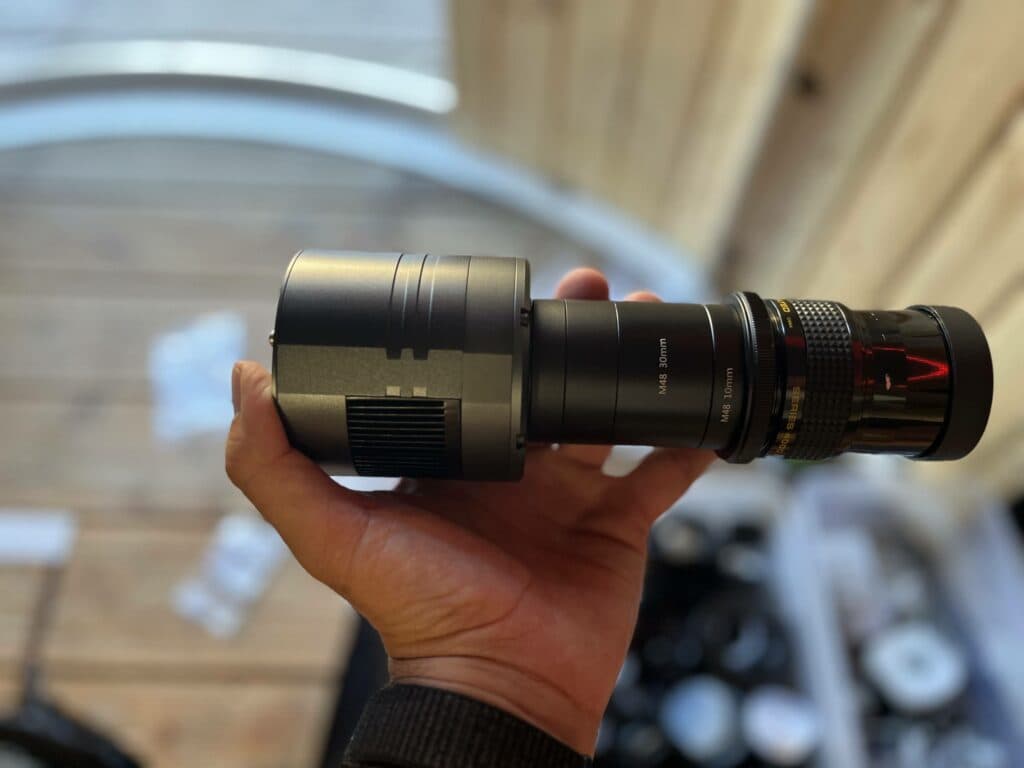
The included adapters and extensions are generally sufficient. However, additional specific lengths may need to be purchased for special cases, such as when attaching a reducer.
One particularly noteworthy inclusion is the set of T2 spacers and shims of different thicknesses. These can be placed between the camera and a filter wheel to determine the final angular position of the attachment.
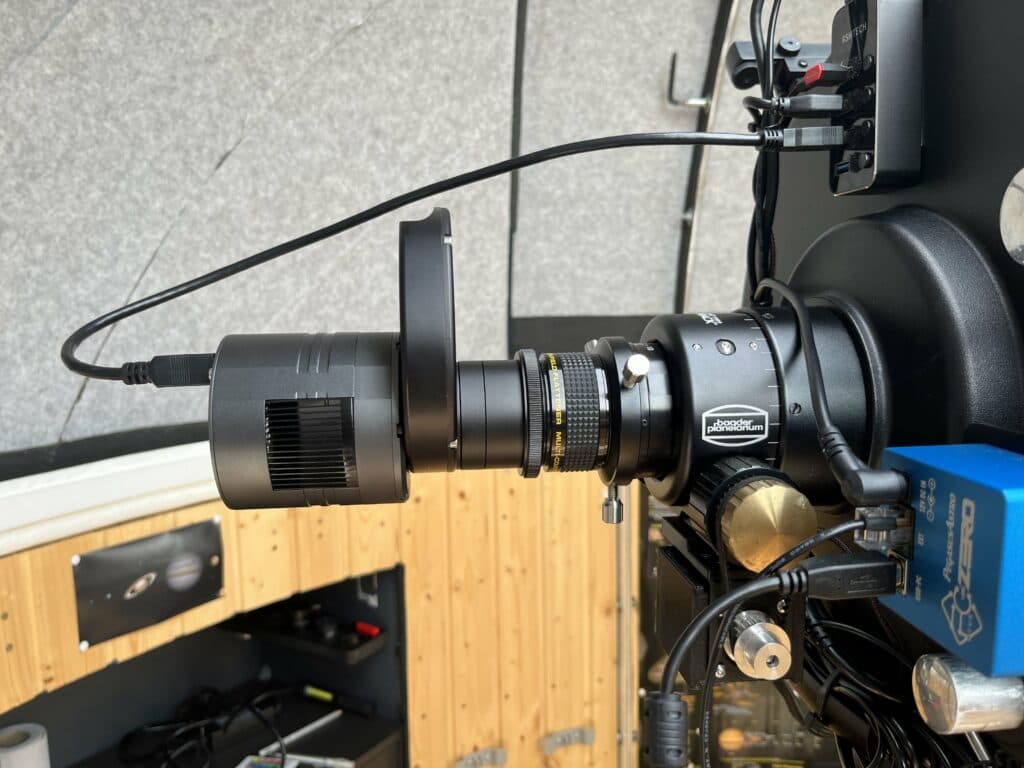
The provided camera bag is padded and well-made. However, it may not accommodate the fully assembled camera with a reducer attached, which could be inconvenient.
First Practical Steps:
Before connecting the camera to a computer, it is necessary to install the drivers. These can be found on the SVBONY website under Software-Driver. After downloading and installing the drivers for your operating system, you can then connect the camera. The installation of ASCOM drivers is not mandatory.
Issues with N.I.N.A:
Using N.I.N.A as the capture software, there may be some issues with older versions where the second-to-last image taken is registered as the last image. This can be problematic, especially during automated focusing or plate-solving.
However, in the current version of N.I.N.A, this issue was not encountered. For older versions, a specific ".dll" file can be copied into the N.I.N.A folder. Detailed instructions with images can be found here.
Within N.I.N.A itself, everything functions as expected. All features are present and work properly.
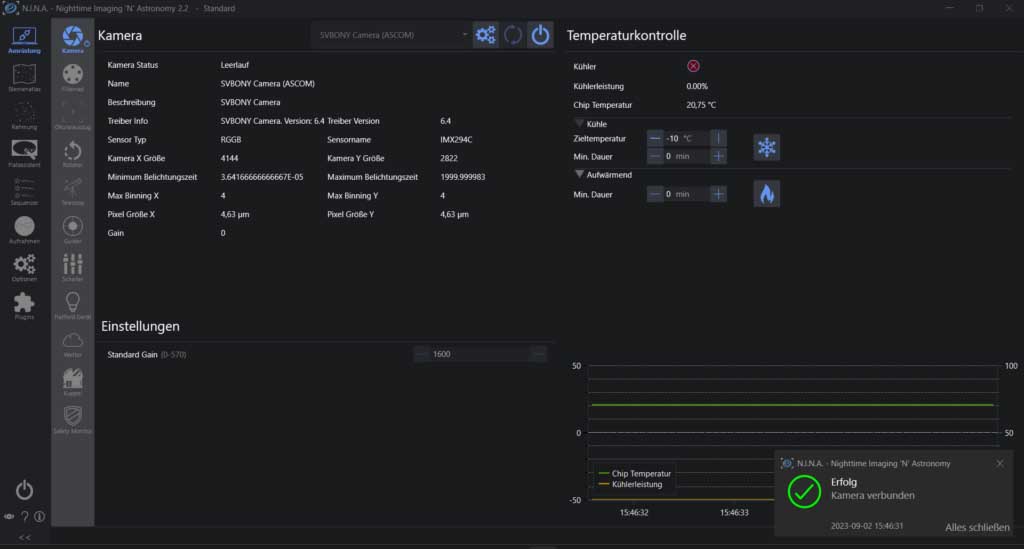
Even the automation in the sequencer, such as cooling down, automatic start-up and autofocus, worked right away.
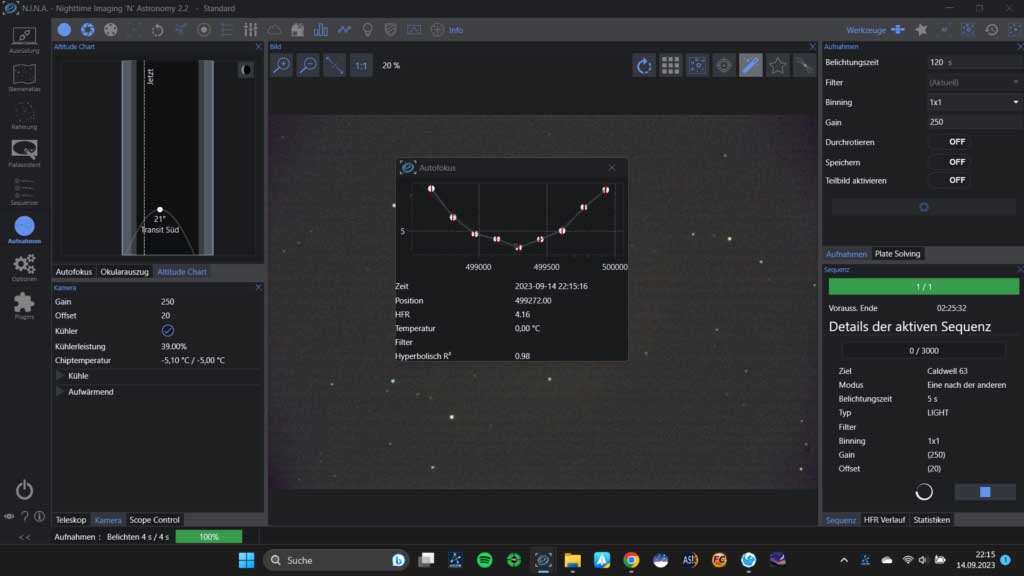
The camera's cooling system appears to function well. In an ambient temperature of around +20°C, the camera reliably cooled down to -5°C with a cooling power of approximately 40%.
Initial Photos:
The first target chosen was the Messier 13 globular cluster. Adjusting from ISO to gain settings took some trial and error. Eventually, a gain setting of 250 was selected, producing satisfactory results in a 5-second exposure.
Using the N.I.N.A sequencer, the camera was automatically cooled to the set temperature of -5°C, the target was centered using plate-solving, autofocus was performed, and lights were captured after a short period.
The globular cluster appeared quite impressive after nearly one hour of total exposure time. Subsequent images taken with the SV405CC showed a significant improvement, primarily due to shorter exposure times and reduced noise compared to using a DSLR camera.
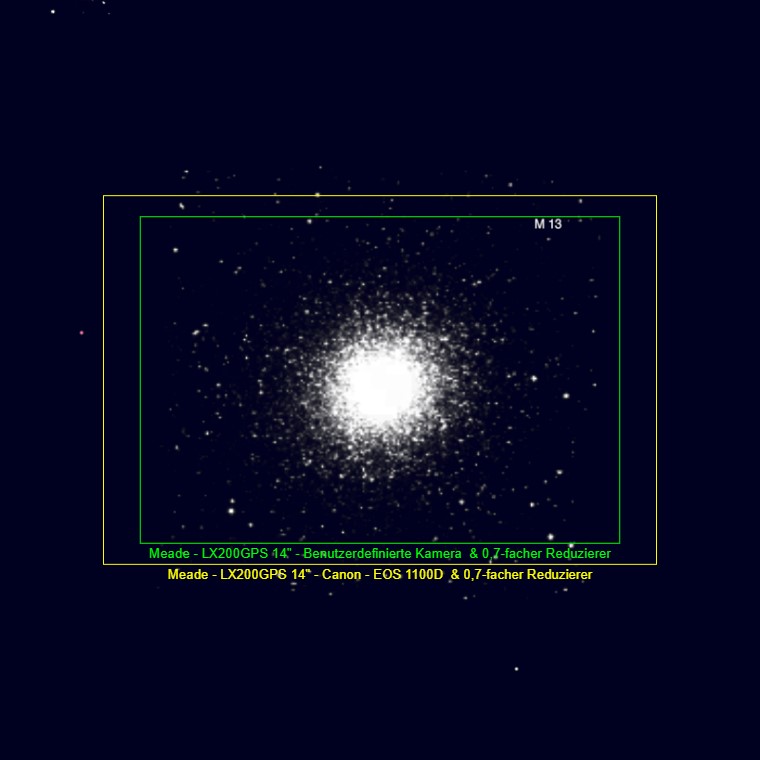
Notably, the increased convenience provided by controlling all aspects through software on the PC was a welcome change. Additional functionalities, such as capturing images in live view and manually saving images, added further convenience.
Conclusion:
As a beginner in astrophotography, I am overwhelmed by the increased comfort and improvement in image quality offered by the SVBONY SV405CC camera. While I cannot compare it directly to the ZWO ASI294MC-Pro, my SV405CC functions flawlessly with N.I.N.A and FireCapture. Ultimately, individuals must consider whether the enhanced compatibility and USB 2.0 hub of the ZWO ASI294MC-Pro justify the additional €500 cost.








